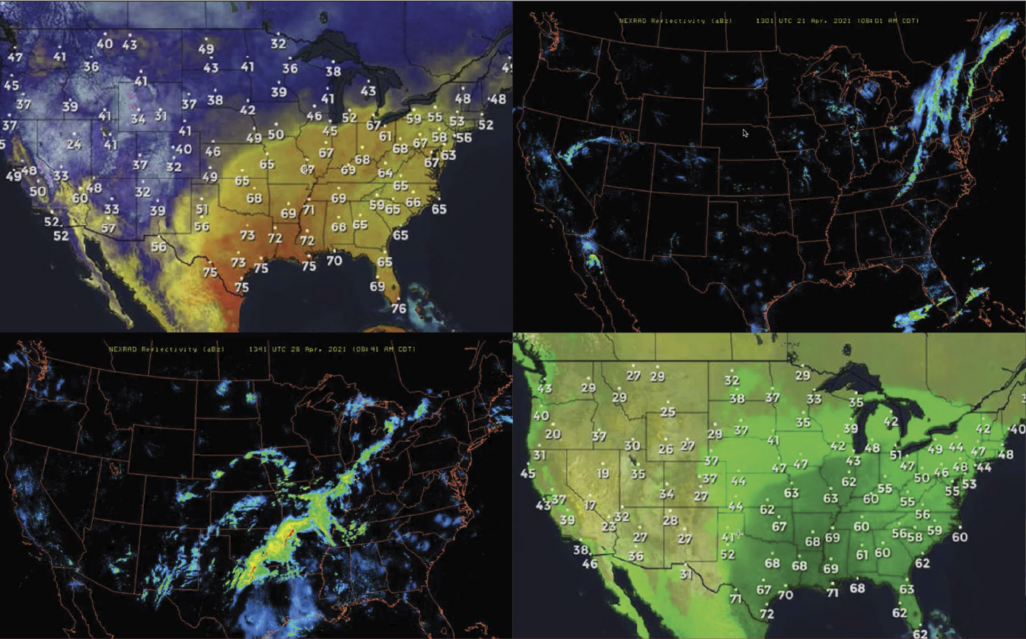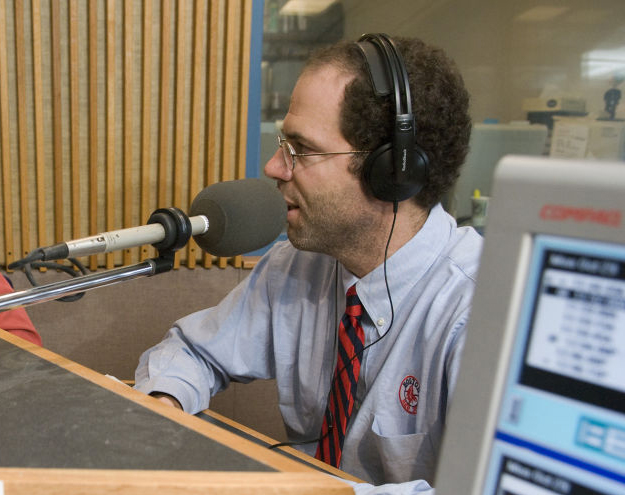Weather discussions
A Noreaster hits New England, a tornado sweeps over the Great Plains and an atmospheric river crashes into the west coast — a lot of weather can happen in a week. For Professor Jon Martin at the University of Wisconsin–Madison Department of Atmospheric and Oceanic Sciences, these weather phenomena create teachable moments — opportunities to combine atmospheric science theory with real-world events to reinforce student learning.

Credit: Jon Martin
As a result of lectures shifting online in 2020, Martin adapted his regular curriculum by recording a weekly series for his introductory Atmospheric and Oceanic Sciences 100 class. Known simply as “weather discussions,” these online videos highlight recent and notable weather events around the US, augmenting them with the most recent coursework and theory. These videos are released on the AOS Youtube Channel and are available to the public.
“I build the discussions by starting at the same level as the lecture material. It’s a natural progression,” says Martin. “It starts out with fundamental ideas of pressure, temperature, density and the gas law. Then I find interesting weather patterns that demonstrate these principles.”
Specialized weather satellite imagery and products developed at the UW–Madison Space Science and Engineering Center, the Cooperative Institute for Meteorological Satellite Studies and by AOS researchers are central to each discussion. Leveraging these images from the global network of satellites, Martin is able to peer through the different layers of Earth’s atmosphere and show his students how storm systems form and why they behave the way they do.

Martin teaches AOS 100 during the Spring semester beginning in January. He says the depths of winter bring energetic weather systems to the northern US and almost guarantee exciting winter weather. March and April mark a transition to severe weather like thunderstorms and squall lines. As the course develops, Martin covers more complex topics including water vapor and radiative transfer to explain how energy circulates around the Earth.
Martin is enthusiastic about weather, and it shows. His curiosity and passion for the weather guides the selection of phenomena to investigate and are crucial to the learning experience, he says. He enjoys exploring and analyzing a weather system alongside his students.
“I make it personal by introducing myself and how I became interested in weather,” he says. “As someone who grew up in New England with a paper route, I had to pay attention to the weather and observe how it changed.”
Atmospheric science can be abstract, but by pairing these real-world examples with a true love of science and weather, Martin has found an engaging way to reach students and others in the community.
You can find Professor Martin’s lectures online by visiting the UW–Madison Atmospheric and Oceanic Sciences YouTube page.
